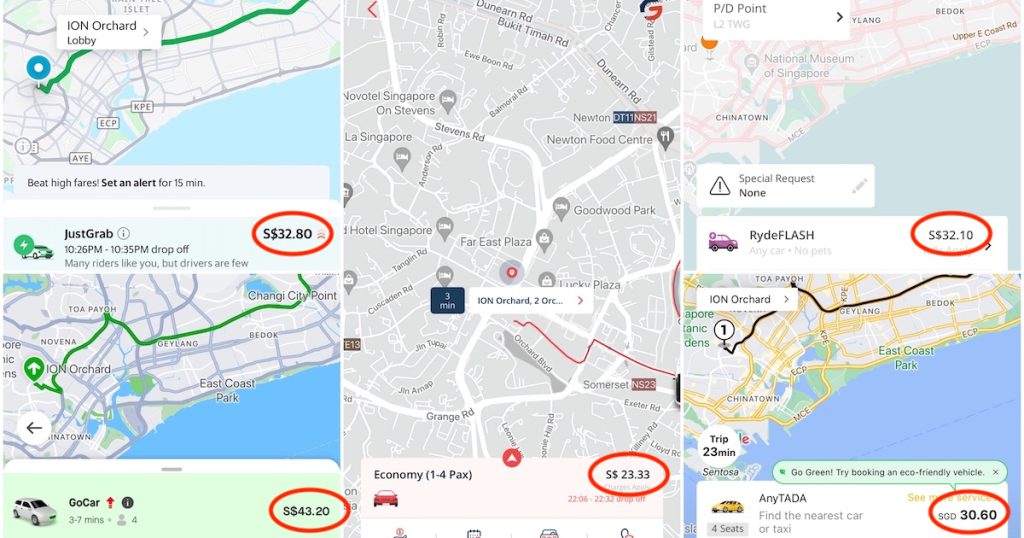On Tuesday (February 14), Geolah launched the beta trial of its ride-hailing service GeoRide, which allows passengers to book a ride for private-hire cars, fixed meter taxis and private chauffeurs for one, four, or eight-hour durations.
Beyond ride-hailing, the “next-gen tech platform” will progressively launch a wide array of other services such as carpool, AirportXpress, CrossBorder, land tours, parcel, food and grocery delivery service in the next two years.
Their mission is to create a superapp that offers a range of transportation services and introduce zero commission fee for its partner-drivers.
However, Geolah users can only book rides on its app for now.
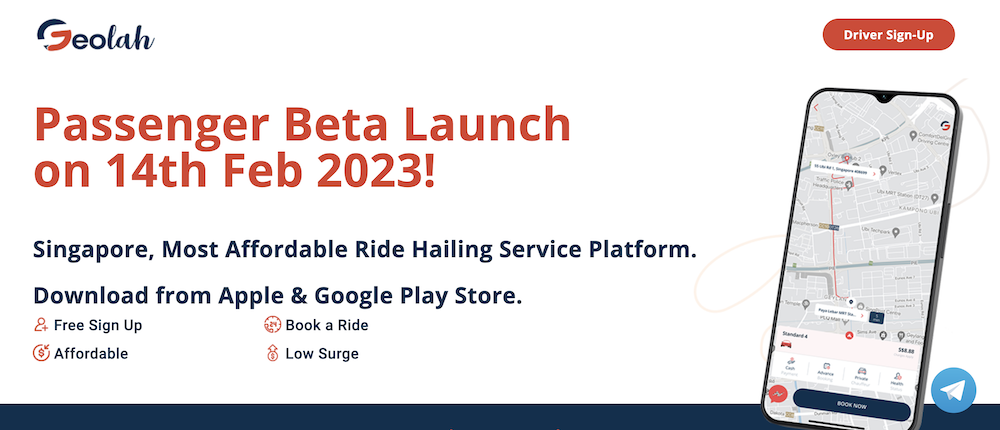
On its website, Geolah proudly claims to be “Singapore’s most affordable ride-hailing service platform”. How “affordable” is it really, and how does it stack up against its ride-hailing rivals?
Mirror mirror, who’s the cheapest of them all?
For the test, we decided to check the fares across five different ride-hailing apps in Singapore: Grab, Gojek, Ryde, Tada, and of course, new kid Geolah.
We randomly chose two destinations as the pick-up and drop-off point (from ION Orchard to Tampines Mall), and compared the fares across different times of the day to see if there are any fluctuations.
(Disclaimer: Fares shown exclude any prevailing promo codes/discounts)
Before 9am: Morning rush hour
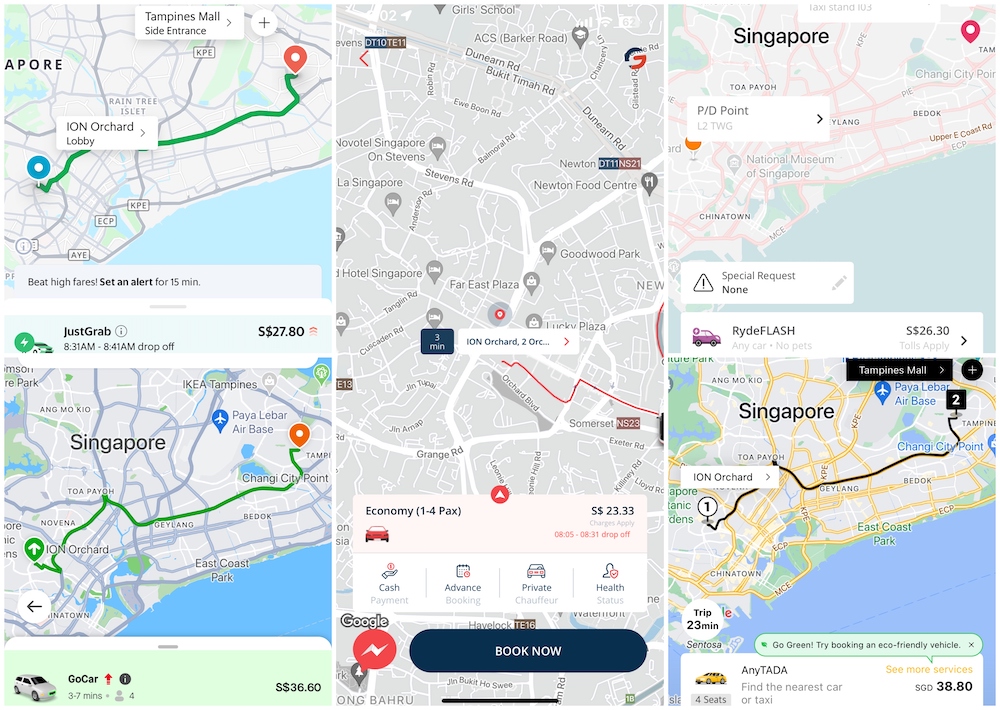
Around 12pm: Lunch hour
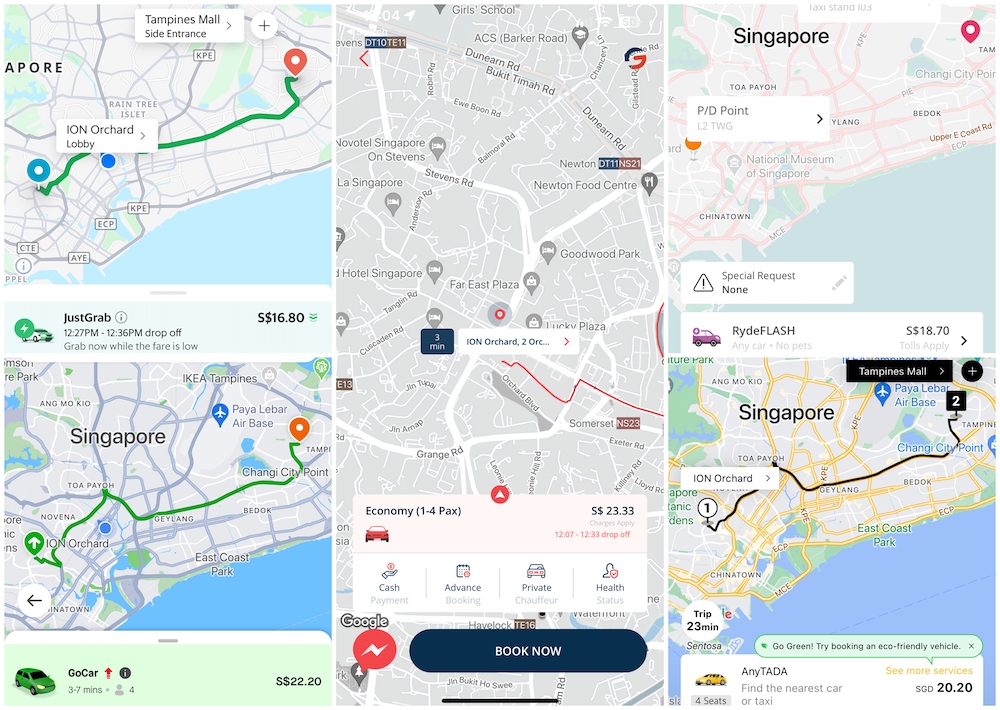
4.30pm: Mid-afternoon meeting
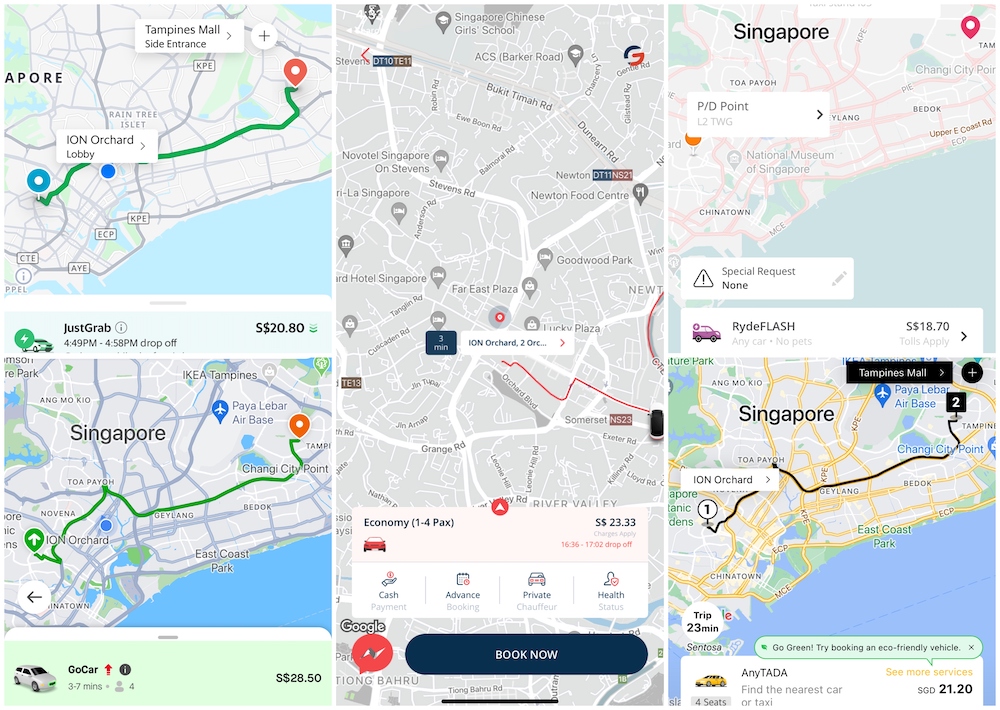
6.30pm: Evening rush hour
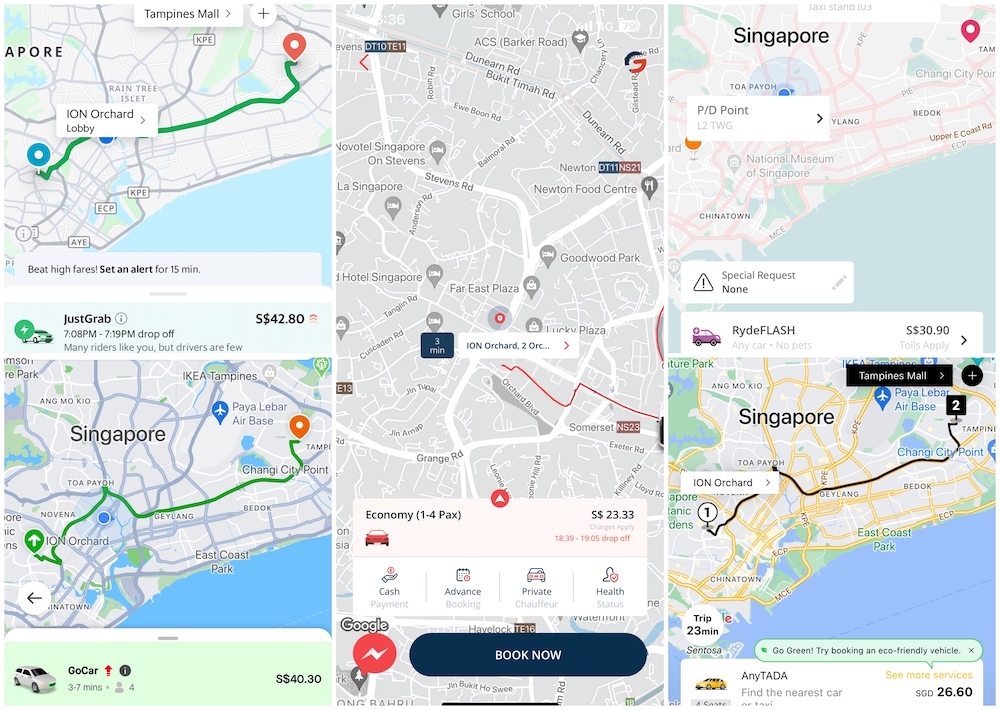
10pm: Post-dinner date
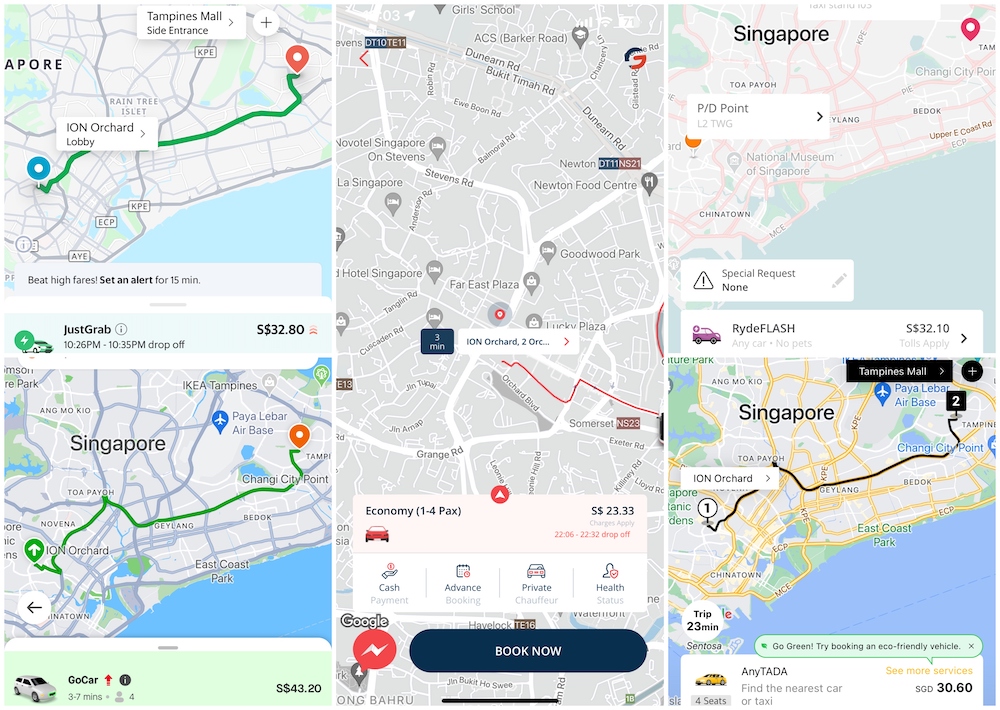
Past midnight: Late night out
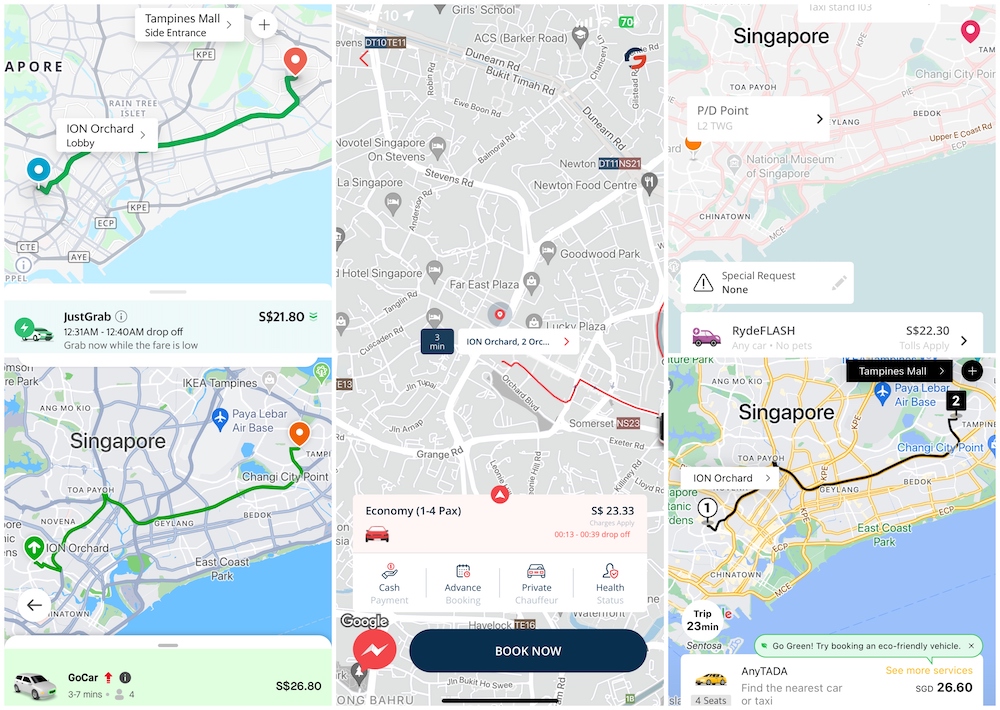
Verdict: Geolah offers cheapest fares during peak periods/high demand
Across the entire day, Geolah recorded the cheapest fares three out of six times (in the morning, evening, and at night).
It’s also interesting to note that Geolah’s fares remained consistent throughout the day because it does not charge dynamic pricing. In a recent interview with Vulcan Post, Geolah co-founder Deniel Singh said that Geolah’s ride fares are calculated based on driver availability, distance, and the type of service.
Typically, fares tend to surge when there are more people booking than the number of drivers available in an area — for example, during peak hours, rainy weather, or in more secluded places — to encourage drivers to accept the ride.
However, this is not the case for Geolah, making it a very feasible ride-hailing option during these high-demand periods.
Clearly, the biggest factor to get riders on board (pun intended) is competitive fares. Especially in Singapore, it’s a challenge to instil loyalty among price-sensitive riders who tend to jump ship (or apps, in this matter) as long as one party offers a lower fare.
A drawback for Geolah is that it does not offer other ride options such as shared rides/carpooling yet unlike Grab and Ryde, which is much cheaper than a standard ride.
While a cheaper fare is attractive, other factors such as the waiting time also plays a huge role. As Geolah is a new player, it has yet to build a significant fleet of drivers compared to its counterparts.
So far, Geolah has recruited over 540 drivers in Singapore. In contrast, Deniel had said that there are currently approximately 90,000 TDVL and 47,000 PDVL drivers in Singapore, according to Land Transport Authority statistic.
In the next two years, Geolah aims to recruit 2.5 per cent of the total TDVL and PDVL pool of local drivers, and its promise of zero commission fees for its driver-partners can help accelerate this goal.
For now, the reality is that having few drivers would mean a longer waiting time for the user, or worse, no cars are available for booking. That said, Geolah is still fairly new in the local ride-hailing scene so let’s give it some time to strengthen its foothold here.
Featured Image Credit: Vulcan Post


